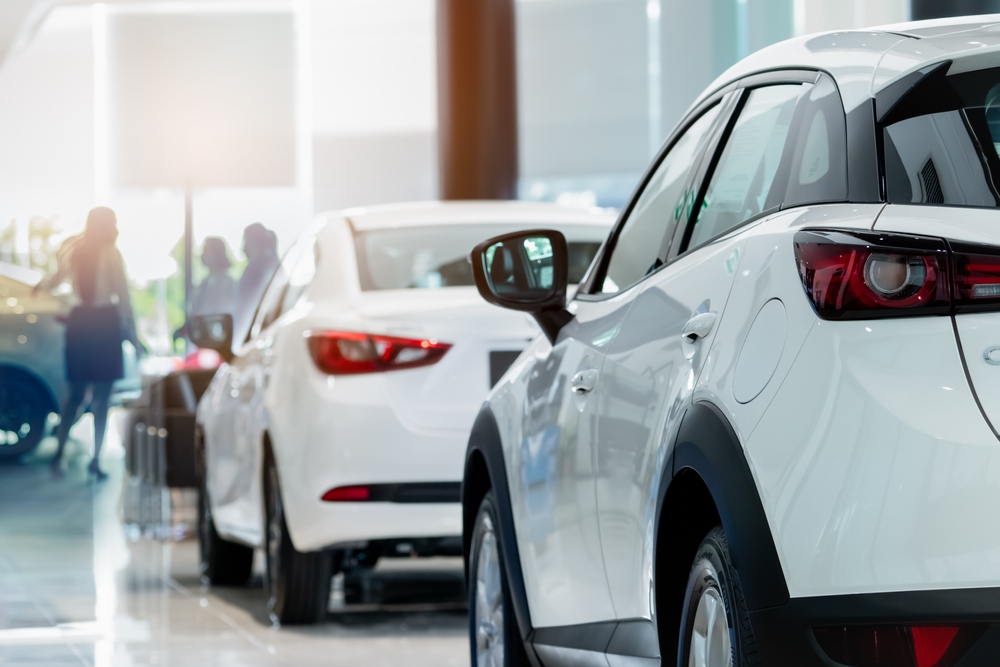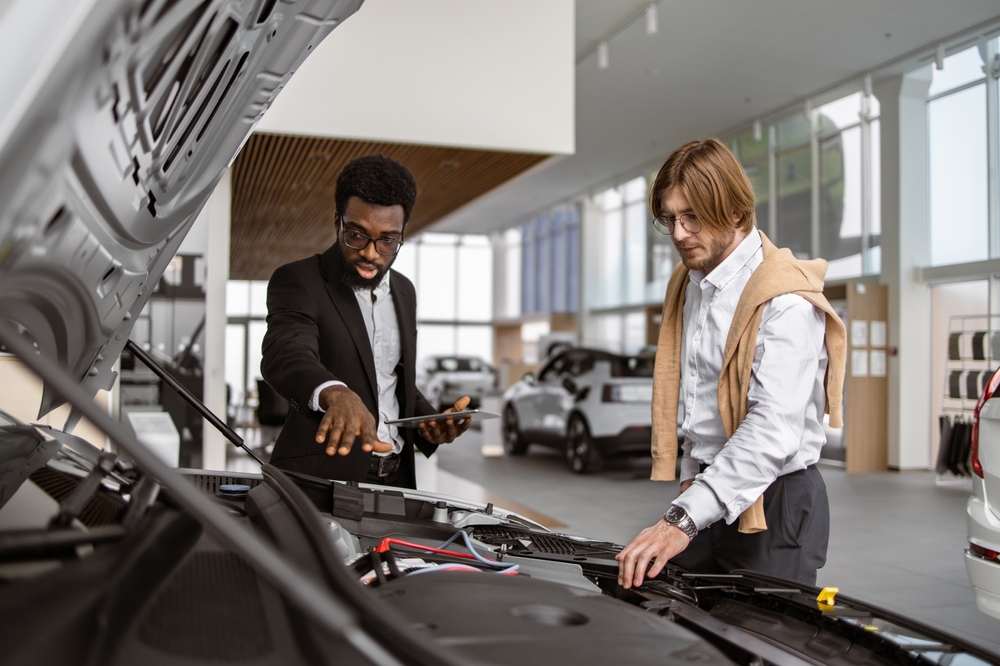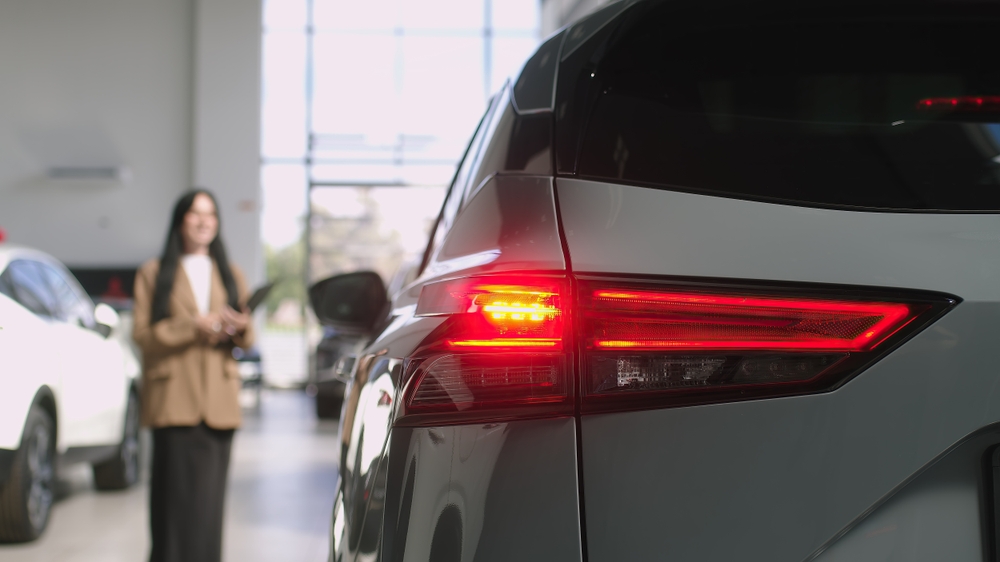
Blog

5 Proven Digital Marketing Strategies Every Auto Dealer Should Use in 2025
The way customers shop for cars has changed for good. Today, the car buying journey almost always begins online. Potential buyers spend hours researching models, comparing prices, and reading reviews long before they ever set foot in a showroom. If your dealership isn’t visible and engaging online, you’re missing out on a massive opportunity to connect with these modern customers.
To help you navigate this landscape, we’ve put together five proven digital marketing strategies that every auto dealer should be using in 2025. These tactics are designed to increase your online visibility, attract qualified leads, and ultimately drive more sales. From optimizing your website to leveraging social media and analyzing your results, this guide will give you the roadmap you need for success.
Why Digital Marketing is Essential for Auto Dealers in 2025
Gone are the days when a big newspaper ad or a primetime TV commercial was enough to bring a steady stream of customers to your lot. While traditional marketing still has its place, the center of gravity has shifted online. For auto dealerships, embracing digital marketing isn’t just an option—it’s essential for survival and growth.
The Shift from Traditional to Digital Marketing
Think about the last time you made a major purchase. Did you flip through a phone book or did you pull out your smartphone? Your customers are doing the same. They use search engines like Google to find local dealerships, social media to see what others are saying about you, and email to receive special offers.
Traditional methods like print ads and radio spots are often expensive and hard to track. You cast a wide net and hope for the best. Digital marketing, on the other hand, allows for precise targeting. You can reach specific demographics, interests, and even people who have recently visited competitor websites. This targeted approach means your marketing dollars are spent more efficiently, reaching the people most likely to buy from you.
How Online Presence Impacts Car Sales
Your dealership’s online presence is your new digital showroom. A professional, easy-to-use website and active social media profiles build trust and credibility. Most car buyers today will visit your website before they visit your physical lot. If your site is slow, difficult to navigate, or outdated, they may assume your dealership operates the same way.
A strong online presence makes it easy for customers to browse your inventory, schedule a test drive, and even get pre-approved for financing. By providing a seamless online experience, you remove friction from the buying process. This convenience can be the deciding factor that brings a customer to your dealership instead of a competitor’s. In short, a better online experience directly translates to more foot traffic and higher car sales.
Strategy 1: Optimize Your Dealership Website for SEO
Search Engine Optimization (SEO) is the process of making your website more visible to people searching for your products or services on search engines like Google. When a potential customer searches for “Ford dealership near me” or “best deals on used SUVs,” you want your dealership to appear at the top of the results. Good SEO makes that happen.
Keyword Research for Automotive Searches
Keywords are the words and phrases people type into search engines. To attract the right customers, you need to know what they’re searching for. Start by brainstorming terms related to your business. Think about the makes and models you sell, your location, and the services you offer.
Use tools like Google Keyword Planner to find popular search terms. Look for keywords like “Honda Civic for sale in [Your City],” “used truck dealership,” or “car service center.” Focus on long-tail keywords (phrases of three or more words) as they are often less competitive and show higher buyer intent. Once you have your list, integrate these keywords naturally into your website’s pages, blog posts, and vehicle descriptions.
Local SEO Tips for Driving Showroom Traffic
For auto dealerships, local SEO is critical. You want to attract customers in your geographic area. The first step is to claim and optimize your Google Business Profile. Fill out every section completely, including your address, phone number, hours, and photos of your dealership.
Encourage happy customers to leave reviews on your Google profile, as positive reviews significantly boost your local ranking. Also, ensure your dealership’s name, address, and phone number (NAP) are consistent across all online directories, like Yelp and the Better Business Bureau. This consistency signals to search engines that your business information is reliable, helping you rank higher in local search results.
Mobile Optimization for Car Buyers on the Go
A significant portion of your website visitors will be using their smartphones. If your website isn’t optimized for mobile devices, you’re providing a poor user experience and hurting your search rankings. A mobile-friendly website should load quickly, be easy to read without zooming, and have buttons that are simple to tap.
Test your website on different mobile devices to ensure everything works as it should. Your inventory pages should be easy to browse, with clear images and pricing. Contact forms and click-to-call buttons should be prominent, allowing mobile users to connect with you effortlessly. Google prioritizes mobile-friendly sites, so a good mobile experience is non-negotiable for modern SEO.
Strategy 2: Leverage Social Media Platforms to Connect with Customers
Social media is more than just a place to post pictures; it’s a powerful tool for building a community around your dealership. Platforms like Facebook, Instagram, and even TikTok allow you to connect with customers on a personal level, showcase your inventory, and build brand loyalty.
Facebook & Instagram Advertising for Dealerships
Facebook and Instagram offer incredibly powerful advertising tools that let you target users based on demographics, interests, location, and online behavior. You can create ads to promote new inventory, special offers, or service department deals.
For example, you can run an ad campaign targeted at people in your area whose car lease is about to expire. Or you can target users who have recently shown interest in a specific car model. Use high-quality images and videos in your ads to grab attention. A clear call-to-action, such as “Schedule a Test Drive” or “View Inventory,” will guide users on what to do next.
Creating Engaging Video Content for Social Media
Video is the most engaging type of content on social media. People love watching vehicle walkarounds, behind-the-scenes tours of the dealership, and customer testimonials. These videos don’t need to be Hollywood productions; a well-shot video from a smartphone can be very effective.
Consider creating short, informative videos that answer common customer questions, like “What to look for in a used car” or “How to pair your phone with Bluetooth.” Live video on Facebook or Instagram is another great way to host Q&A sessions or showcase a new arrival in real-time. Authentic video content helps humanize your dealership and builds a stronger connection with your audience.
Managing Reviews and Customer Engagement Online
Your online reputation is everything. Social media is a common place for customers to share their experiences, both good and bad. It’s crucial to monitor your social channels and respond to all comments and reviews promptly.
Thank customers for positive feedback and address negative comments professionally and empathetically. Offer to take the conversation offline to resolve any issues. Responding publicly shows that you care about customer satisfaction and are committed to making things right. This proactive engagement builds trust and can turn a negative experience into a positive one.
Strategy 3: Invest in Pay-Per-Click (PPC) Advertising

Pay-Per-Click (PPC) advertising is a way to get your dealership in front of customers at the exact moment they are searching for what you offer. With PPC, you bid to have your ads appear at the top of search engine results, and you only pay when someone clicks on your ad.
Google Ads for Auto Dealerships
Google Ads is the most popular PPC platform. It allows you to target users searching for specific keywords related to your dealership. You can create campaigns for new cars, used cars, specific models, or your service center. For instance, you can run an ad for “Toyota Camry lease deals” that appears only to users within a 20-mile radius of your dealership.
The key to a successful Google Ads campaign is to create compelling ad copy and link your ads to relevant landing pages on your website. A person clicking an ad for a specific car model should be taken directly to that vehicle’s page, not your homepage. This relevance improves your ad performance and increases the chances of conversion.
Retargeting Ads to Capture Potential Buyers
Did you know that most people who visit your website will leave without taking any action? Retargeting is a powerful PPC strategy that helps you bring those visitors back. It works by showing your ads to people who have previously visited your website as they browse other sites online.
For example, if someone looked at a specific used truck on your site, you can show them an ad for that exact truck on Facebook or other websites they visit. This keeps your dealership top-of-mind and reminds them of their interest. Retargeting is a cost-effective way to re-engage warm leads and guide them back toward a purchase.
Budgeting Tips for Maximum ROI
PPC can get expensive if not managed carefully. To get the best return on investment (ROI), start with a modest budget and focus on your most profitable campaigns. Track your results closely to see which keywords and ads are driving the most leads and sales.
Allocate more of your budget to what’s working and pause what isn’t. Use negative keywords to prevent your ads from showing for irrelevant searches. For example, if you don’t sell car parts, you can add “parts” as a negative keyword to avoid paying for clicks from people who aren’t looking for a vehicle. Continuous monitoring and adjustment are key to a profitable PPC strategy.
Strategy 4: Use Email Marketing to Nurture Leads
Email marketing remains one of the most effective ways to communicate with your customers and nurture leads over time. It allows you to stay in touch with past customers and guide prospective buyers through their decision-making process with valuable, personalized content.
Personalized Campaigns for Prospective Buyers
One-size-fits-all emails don’t work. The key to successful email marketing is personalization. Segment your email list based on customer interests and behaviors. For example, you can create separate email campaigns for people interested in trucks, SUVs, or sedans.
Send targeted emails with inventory updates, special offers, or helpful content related to their interests. If a customer downloaded a brochure for a specific model, follow up with an email offering a test drive for that vehicle. This personal touch shows that you understand their needs and can significantly increase engagement and conversion rates.
Automation Tools for Effective Lead Management
Managing a large list of leads can be time-consuming. Email automation tools can help you streamline the process and ensure no lead falls through the cracks. You can set up automated email sequences that are triggered by specific user actions.
For example, when someone fills out a contact form on your website, you can automatically send them a “thank you” email followed by a series of nurturing emails over the next few weeks. These emails can provide more information about your dealership, share customer testimonials, and offer incentives to visit. Automation saves you time and ensures consistent communication with every lead.
Strategy 5: Analyze Data and Track Performance for Continuous Improvement
You can’t improve what you don’t measure. Digital marketing provides a wealth of data that can help you understand what’s working and where you can improve. Regularly analyzing your performance is crucial for optimizing your strategies and maximizing your marketing budget.
Key Metrics to Measure Campaign Success
To understand your campaign’s effectiveness, you need to track the right key performance indicators (KPIs). For your website, monitor metrics like website traffic, bounce rate, and time on page. For your PPC and social media ads, track click-through rate (CTR), cost per click (CPC), and conversion rate.
For lead generation, focus on metrics like the number of form submissions, phone calls, and test drives scheduled. By tracking these KPIs, you can get a clear picture of your marketing ROI and make data-driven decisions to improve your results.
Using Analytics for Continuous Optimization
Tools like Google Analytics provide deep insights into your website’s performance. You can see which channels are driving the most traffic, which pages are most popular, and how users are navigating your site. Use this data to identify areas for improvement.
If you notice a high bounce rate on a particular page, it may indicate that the content isn’t relevant or the page is loading too slowly. If a specific ad campaign is generating a lot of clicks but few conversions, you may need to adjust your landing page or your ad targeting. Regularly reviewing your analytics allows you to make continuous, incremental improvements that add up to significant gains over time.
Bringing It All Together: Multi-Channel Marketing for Auto Dealerships

Each of these digital marketing strategies is powerful on its own, but they work best when used together. A multi-channel approach creates a cohesive and seamless customer experience, reinforcing your message across every touchpoint.
Integrating SEO, Social Media, PPC, and Email
Imagine a customer journey powered by an integrated strategy. It starts with a potential buyer searching on Google (SEO), where they find your dealership. They visit your website but aren’t ready to buy. Later, they see a retargeting ad on Facebook (PPC and Social Media) for a car they viewed. They click the ad, return to your site, and sign up for your email newsletter. Over the next few weeks, they receive personalized emails (Email Marketing) with special offers and helpful content, which finally convinces them to schedule a test drive.
This is the power of an integrated approach. Each channel supports the others, creating a powerful marketing engine that guides customers from awareness to purchase.
Creating a Cohesive Marketing Strategy for Maximum Impact
To achieve maximum impact, your marketing efforts must be aligned. Your messaging, branding, and offers should be consistent across all channels. Your SEO team should work with your PPC team to share keyword data. Your social media content should complement your email campaigns.
By breaking down the silos between your marketing channels, you create a stronger, more effective strategy. This holistic approach not only improves your marketing results but also provides a better, more consistent experience for your customers. At Pinnacle Sales & Mail, we specialize in creating these comprehensive, revenue-driving strategies for dealerships just like yours.









